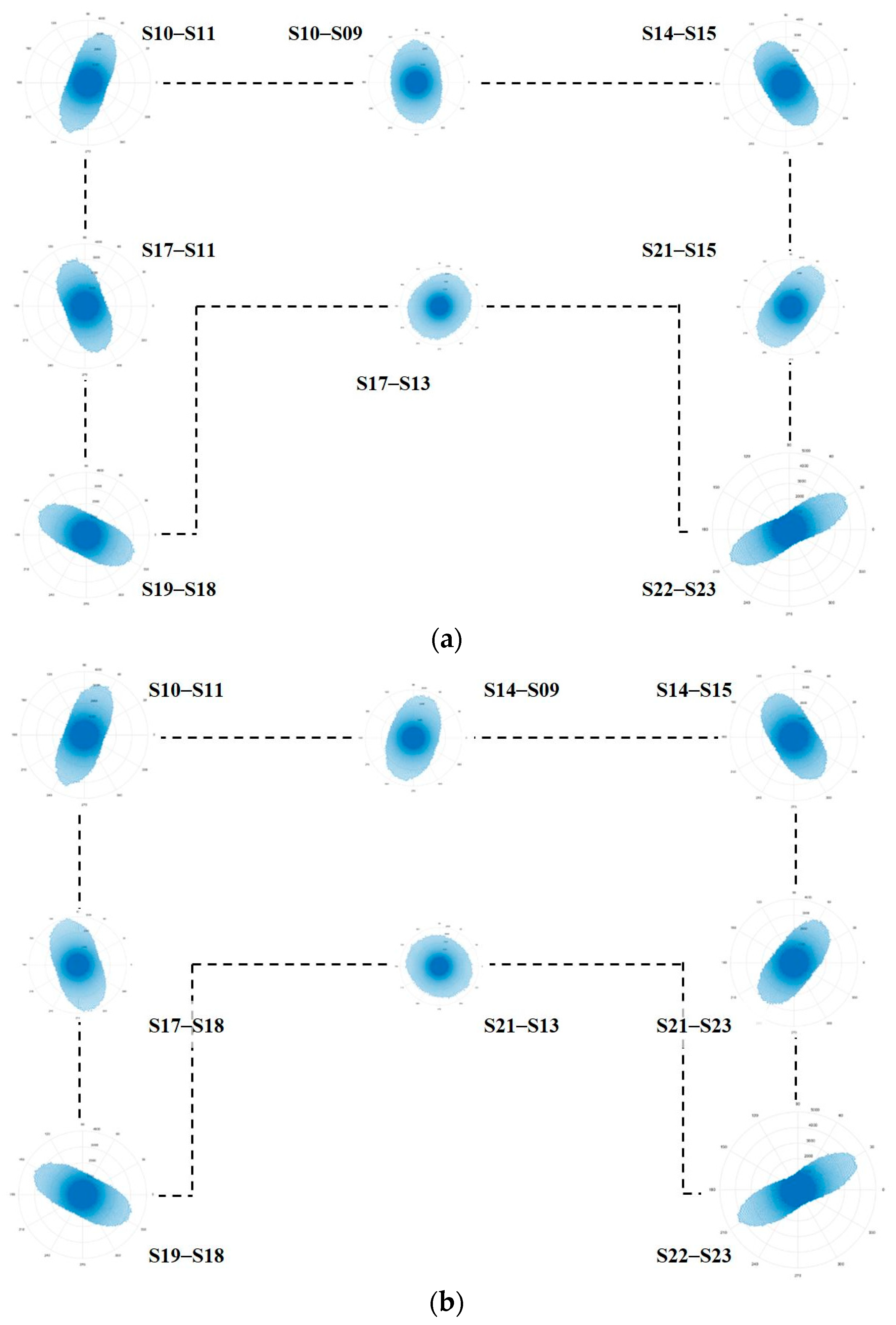Experimental Vibration Analysis in the Knowledge Process of a Historic Confined Masonry Building
Abstract
:1. Introduction
2. Torlonia Building: Description and Traditional Tests
3. Experimental Vibrational Analysis
- Three seismometers (S24, S16 and S20) were deployed at the basement, in x, y and z directions, respectively.
- Nine seismometers were deployed at the first floor, six of them in x direction, three in y direction.
- Twelve seismometers were deployed at the second floor, six of them in x direction, six in y direction.
3.1. Analysis in the Frequency Domain
- A first resonance frequency at 4.15 Hz involves the entire building in the x direction, with displacements of the same order for all the sensor locations.
- The first resonance frequency of 4.47 Hz in the y direction, like the previous one, involves the entire building; however, in this case, the modal components at the external walls are about double of those at S09 and S13.
- The third resonance frequency, equal to 5.62 Hz, is still in the y direction; it also involves the entire building and, as above, the modal components at the external walls are about twice as those at S09 and S13.
- The resonance frequency of 5.81 Hz is likely to correspond with a mode of the whole building in the x direction; in this case, the modal components of the main body are similar to each other, while those of the wing (S19 and S22) are much higher.
- The resonance frequency of 6.69 Hz refers to the right wing, both in the x and y directions.
- Analogously, the resonance frequency of 7.84 Hz refers to the right wing, both in x and y directions.
- The resonance frequency of 9.86 Hz, which, once again, concerns the main block in the y direction, involves different signal amplitudes for the sensors of the second floor (S09 and S13) and highlights a certain deformability of that floor in its plane.
- Finally, the resonance frequency of 11.2 Hz corresponds to a mode engaging the two lateral blocks in the x direction.
3.2. Time Domain Analysis
4. Finite Element Model
4.1. Confined Masonry Walls Model
- is the interaction coefficient (α = 1.25);
- = Shear strength of masonry without compression;
- l = Wall base width;
- t = Thickness;
- h = Height;
- b = h/l, but 1.0 ≤ b ≤ 1.5;
- σ0 = Vertical stress on the wall;
- n = Number of reinforcing bars;
- ϕ = Diameter of reinforcing bar;
- fc = Compressive strength of concrete;
- fy = Yield stress of reinforcing steel.
4.2. Model of the Building
4.3. Modal Analysis
5. Push-Over and Response Spectrum Analyses
- -
- Main distribution, where forces are proportional to one of the main modal shapes in x or y direction, respectively.
- -
- Secondary distribution, in which forces are proportional to the masses.
- The minimum value of the capacity peak ground acceleration, with reference to the rigid soil, was found to be equal to agc = 0.151 g and was achieved, as mentioned above, in the case of a force distribution proportional to the fourth mode in y direction. It corresponds to a return period TRC = 139 years.
- According to the Italian Technical Code, the behaviour factor for confined masonry buildings is . These values must be multiplied by 0.8 if the building is irregular in height. The ratio , between the 90% of the seismic action at which the structure reaches its maximum strength and the seismic action at which the first masonry panel reaches its ultimate strength, can be evaluated by means of a nonlinear static analysis (but, in any case, it must be ). In our case study, based on the results of pushover analysis, we computed the value q = 2.5.
6. Conclusions
Author Contributions
Funding
Data Availability Statement
Acknowledgments
Conflicts of Interest
References
- Rossi, M.; Bournas, D. Structural Health Monitoring and Management of Cultural Heritage Structures: A State-of-the-Art Review. Appl. Sci. 2023, 13, 6450. [Google Scholar] [CrossRef]
- Pierdicca, A.; Clementi, F.; Isidori, D.; Concettoni, E.; Cristalli, C.; Lenci, S. Numerical model upgrading of a historical masonry palace monitored with a wireless sensor network. Int. J. Mason. Res. Innov. 2016, 1, 74. [Google Scholar] [CrossRef]
- Bongiovanni, G.; Buffarini, G.; Clemente, P.; Rinaldis, D.; Saitta, F. Experimental vibration analyses of a historic tower structure. J. Civ. Struct. Health Monit. 2017, 7, 601–613. [Google Scholar] [CrossRef]
- Bongiovanni, G.; Buffarini, G.; Clemente, P.; Saitta, F. Time and Frequency Domain Analyses in the Experimental Dynamic Behaviour of the Marcus Aurelius’ Column. Int. J. Arch. Heritage 2019, 15, 64–78. [Google Scholar] [CrossRef]
- Bongiovanni, G.; Buffarini, G.; Clemente, P.; Rinaldis, D.; Saitta, F. Dynamic Characteristics of the Amphitheatrum Flavium northern wall from traffic-induced vibrations. Ann. Geophys. 2017, 60, S0439. [Google Scholar] [CrossRef]
- Bongiovanni, G.; Çelebi, M.; Clemente, P. The flaminio obelisk in Rome: Vibrational characteristics as part of preservation efforts. Earthq. Eng. Struct. Dyn. 1990, 19, 107–118. [Google Scholar] [CrossRef]
- Puzzilli, L.M.; Bongiovanni, G.; Clemente, P.; Di Fiore, V.; Verrubbi, V. Effects of Anthropic and Ambient Vibrations on Archaeological Sites: The Case of the Circus Maximus in Rome. Geosciences 2021, 11, 463. [Google Scholar] [CrossRef]
- Pellegrini, D.; Barontini, A.; Girardi, M.; Lourenço, P.; Masciotta, M.; Mendes, N.; Padovani, C.; Ramos, L. Effects of temperature variations on the modal properties of masonry structures: An experimental-based numerical modelling approach. Structures 2023, 53, 595–613. [Google Scholar] [CrossRef]
- Zonno, G.; Aguilar, R.; Boroschek, R.; Lourenço, P.B. Experimental analysis of the thermohygrometric effects on the dynamic behavior of adobe systems. Constr. Build. Mater. 2019, 208, 158–174. [Google Scholar] [CrossRef]
- Azzara, R.M.; De Roeck, G.; Girardi, M.; Padovani, C.; Pellegrini, D.; Reynders, E. The influence of environmental parameters on the dynamic behaviour of the San Frediano bell tower in Lucca. Eng. Struct. 2018, 156, 175–187. [Google Scholar] [CrossRef]
- Saisi, A.; Gentile, C.; Ruccolo, A. Continuous monitoring of a challenging heritage tower in Monza, Italy. J. Civ. Struct. Health Monit. 2017, 8, 77–90. [Google Scholar] [CrossRef]
- Gentile, C.; Guidobaldi, M.; Saisi, A. One-year dynamic monitoring of a historic tower: Damage detection under changing environment. Meccanica 2016, 51, 2873–2889. [Google Scholar] [CrossRef]
- Ramos, L.F.; Marques, L.; Lourenço, P.B.; De Roeck, G.; Campos-Costa, A.; Roque, J. Monitoring historical masonry structures with operational modal analysis: Two case studies. Mech. Syst. Signal Process. 2010, 24, 1291–1305. [Google Scholar] [CrossRef]
- De Angelis, A.; Lourenço, P.B.; Sica, S.; Pecce, M.R. Influence of the ground on the structural identification of a bell-tower by ambient vibration testing. Soil Dyn. Earthq. Eng. 2022, 155, 107102. [Google Scholar] [CrossRef]
- De Stefano, A.; Matta, E.; Clemente, P. Structural health monitoring of historical heritage in Italy: Some relevant experiences. J. Civ. Struct. Health Monit. 2016, 6, 83–106. [Google Scholar] [CrossRef]
- Chiorino, M.A.; Ceravolo, R.; Spadafor, A.; Fragonara, L.Z.; Abbiati, G. Dynamic Characterization of Complex Masonry Structures: The Sanctuary of Vicoforte. Int. J. Arch. Heritage 2011, 5, 296–314. [Google Scholar] [CrossRef]
- Clemente, P. Extending the life-span of cultural heritage structures. J. Civ. Struct. Health Monit. 2018, 8, 171–179. [Google Scholar] [CrossRef]
- De Canio, G.; Muscolino, G.; Palmeri, A.; Poggi, M.; Clemente, P. Shaking Table Tests Validating Two Strengthening Interventions on Masonry Buildings. In Proceedings of the AIP Conference Proceedings, 2008 Seismic Engineering International Conference commemorating the 1908 Messina and Reggio Calabria Earthquake, MERCEA’08, Reggio Calabria, Italy, 24–27 June 2008; American Institute of Physics: Melville, NY, USA; Volume 1020, pp. 896–903. [Google Scholar] [CrossRef]
- Pepi, C.; Cavalagli, N.; Gusella, V.; Gioffrè, M. Damage detection via modal analysis of masonry structures using shaking table tests. Earthq. Eng. Struct. Dyn. 2021, 50, 2077–2097. [Google Scholar] [CrossRef]
- Boccamazzo, A.; Di Emidio, G.; Diotaiuti, G.; Dudine, A.; Asta, A.D.; Micozzi, F.; Morici, M.; Liberatore, D.; Addessi, D.; Buffarini, G.; et al. Push ‘o ver: A pushover test program on an existing brickwork construction. Procedia Struct. Integr. 2023, 44, 51–58. [Google Scholar] [CrossRef]
- Clemente, P.; Rinaldis, D.; Buffarini, G. Experimental Seismic Analysis of a Historical Building. J. Intell. Mater. Syst. Struct. 2007, 18, 777–784. [Google Scholar] [CrossRef]
- Clemente, P.; Delmonaco, G.; Puzzilli, L.M.; Saitta, F. Stability and seismic vulnerability of the stylite tower at umm ar-rasas. Ann. Geophys. 2019, 61, 49. [Google Scholar] [CrossRef]
- Aras, F.; Krstevska, L.; Altay, G.; Tashkov, L. Experimental and numerical modal analyses of a historical masonry palace. Constr. Build. Mater. 2011, 25, 81–91. [Google Scholar] [CrossRef]
- Misir, I.S.; Yucel, G. Numerical Model Calibration and a Parametric Study Based on the Out-Of-Plane Drift Capacity of Stone Masonry Walls. Buildings 2023, 13, 437. [Google Scholar] [CrossRef]
- Sivori, D.; Lepidi, M.; Cattari, S. Ambient vibration tools to validate the rigid diaphragm assumption in the seismic assessment of buildings. Earthq. Eng. Struct. Dyn. 2019, 49, 194–211. [Google Scholar] [CrossRef]
- Pagnoni, T. Seismic analysis of masonry and block structures with the discrete element method. In Proceedings of the 10th European Conference on Earthquake Engineering, Vienna, Austria, 28 August–2 September 1994; Volume 3, pp. 1669–1674. [Google Scholar]
- Lemos, J.V. Discrete Element Modeling of Masonry Structures. Int. J. Arch. Heritage 2007, 1, 190–213. [Google Scholar] [CrossRef]
- Pulatsu, B.; Erdogmus, E.; Lourenço, P.B.; Lemos, J.V.; Tuncay, K. Simulation of the in-plane structural behavior of unreinforced masonry walls and buildings using DEM. Structures 2020, 27, 2274–2287. [Google Scholar] [CrossRef]
- Du, H.; Yu, J.; Wang, Y.; Zhu, Y.; Tang, Y.; Wang, H. Visualized Failure Prediction for the Masonry Great Wall. Buildings 2022, 12, 2224. [Google Scholar] [CrossRef]
- Clemente, P.; Buffarini, G. Dynamic Response of Buildings of the Cultural Heritage. In Enciclopedia of Structural Health Monitoring; Boller, C., Chang, F.K., Fujino, Y., Eds.; John Wiley & Sons Ltd.: Chichester, UK, 2009; pp. 2243–2252. ISBN 978-0-470-05822-0. [Google Scholar] [CrossRef]
- De Stefano, A.; Clemente, P. Structural health monitoring of historical structures. In Structural Health Monitoring of Civil Infrastructure Systems; Karbhari, V.M., Ansari, F., Eds.; Woodhead Publishing Ltd.: Cambridge, UK, 2009; Chapter 13; pp. 412–434. [Google Scholar] [CrossRef]
- Giraldo, D.F.; Song, W.; Dyke, S.J.; Caicedo, J.M. Modal Identification through Ambient Vibration: Comparative Study. J. Eng. Mech. 2009, 135, 759–770. [Google Scholar] [CrossRef]
- De Sortis, A.; Antonacci, E.; Vestroni, F. Dynamic identification of a masonry building using forced vibration tests. Eng. Struct. 2005, 27, 155–165. [Google Scholar] [CrossRef]
- Lorenzoni, F.; Casarin, F.; Caldon, M.; Islami, K.; Modena, C. Uncertainty quantification in structural health monitoring: Applications on cultural heritage buildings. Mech. Syst. Signal Process. 2016, 66–67, 268–281. [Google Scholar] [CrossRef]
- Pachón, P.; Infantes, M.; Cámara, M.; Compán, V.; García-Macías, E.; Friswell, M.I.; Castro-Triguero, R. Evaluation of optimal sensor placement algorithms for the Structural Health Monitoring of architectural heritage. Application to the Monastery of San Jerónimo de Buenavista (Seville, Spain). Eng. Struct. 2019, 202, 109843. [Google Scholar] [CrossRef]
- Bongiovanni, G.; Buffarini, G.; Clemente, P.; Saitta, F.; Tripepi, C. Experimental analysis of the Torlonia Building in Avezzano, Italy. In Proceedings of the 7th International Conference on Advances in Experimental Structural Engineering, Pavia, Italy, 6–8 September 2017; EUCENTRE Foundation, Pavia, Italy: 2017. 2017; pp. 841–853. [Google Scholar] [CrossRef]
- NTC 2018. Aggiornamento delle Norme Tecniche per le Costruzioni. DM MIT 17 January 2018, Supplemento Ordinario n. 8 alla Gazzetta Ufficiale, 2018, Serie Generale n. 42 of 20 February 2018. Available online: https://www.gazzettaufficiale.it/eli/gu/2018/02/20/42/so/8/sg/pdf (accessed on 5 May 2023).
- Circ. MIT 7/2019. Istruzioni per l’applicazione dell’«Aggiornamento delle “Norme tecniche per le costruzioni”» di cui al DM 17 gennaio 2018, Circolare C.S.LL.PP. n. 7, 21 gennaio 2019, Gazzetta Ufficiale n. 35/2019. Available online: https://www.gazzettaufficiale.it/eli/gu/2019/02/11/35/so/5/sg/pdf (accessed on 5 May 2023).
- EN 1996. Design of Masonry Structures. Eurocode 6, CEN 2022. Available online: https://eurocodes.jrc.ec.europa.eu/EN-Eurocodes/eurocode-6-design-masonry-structures (accessed on 5 May 2023).
- Tomaževič, M.; Klemenc, I. Seismic behaviour of confined masonry walls. Earthq. Eng. Struct. Dyn. 1997, 26, 1059–1071. [Google Scholar] [CrossRef]
- Ahmad, N.; Ali, Z.; Ashraf, M.; Alam, B. Performance assessment of low–rise confined masonry structures for Earthquake induced ground motions. Int. J. Civ. Struct. Eng. 2012, 2, 842–859. [Google Scholar] [CrossRef]
- Magenes, G.; Della Fontana, A. Simplified non-linear seismic analysis of masonry buildings. In Proceedings of the British Masonry Society, London, UK, 13–15 October 1998. [Google Scholar]
- Tomaževič, M.; Bosiljkov, V.; Weiss, P. Structural Behaviour Factor for Masonry Structures. In Proceedings of the 13th World Conference on Earthquake Engineering (13WCEE), Vancouver, BC, Canada, 1–6 August 2004. [Google Scholar]
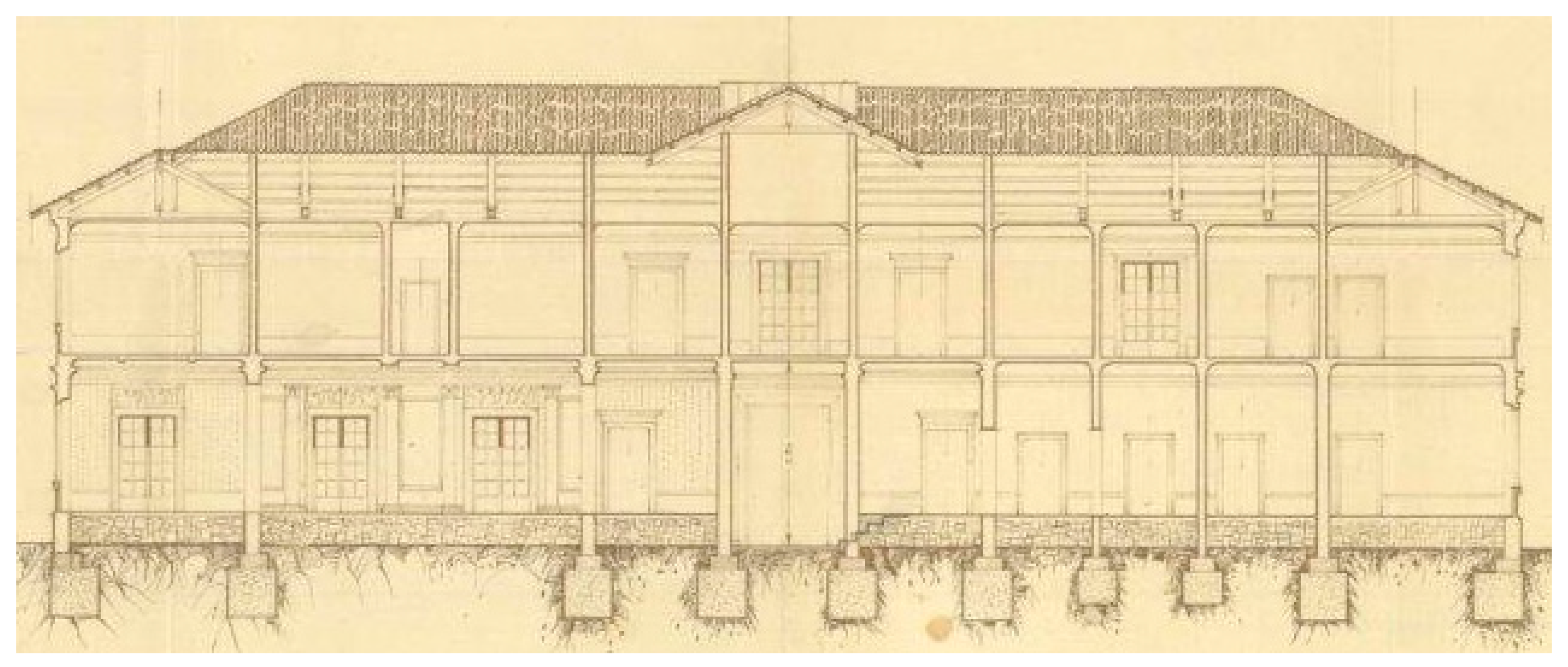


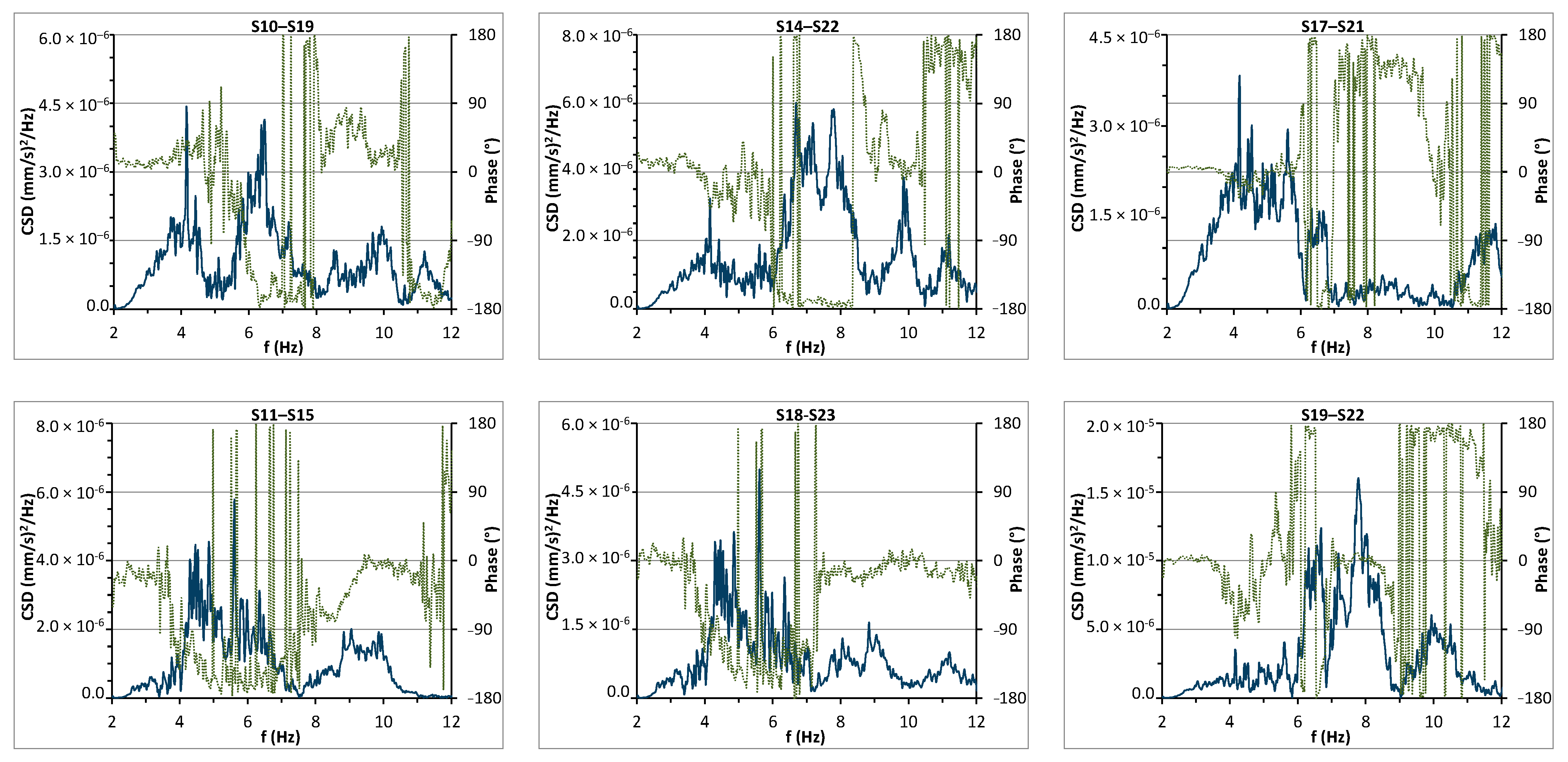

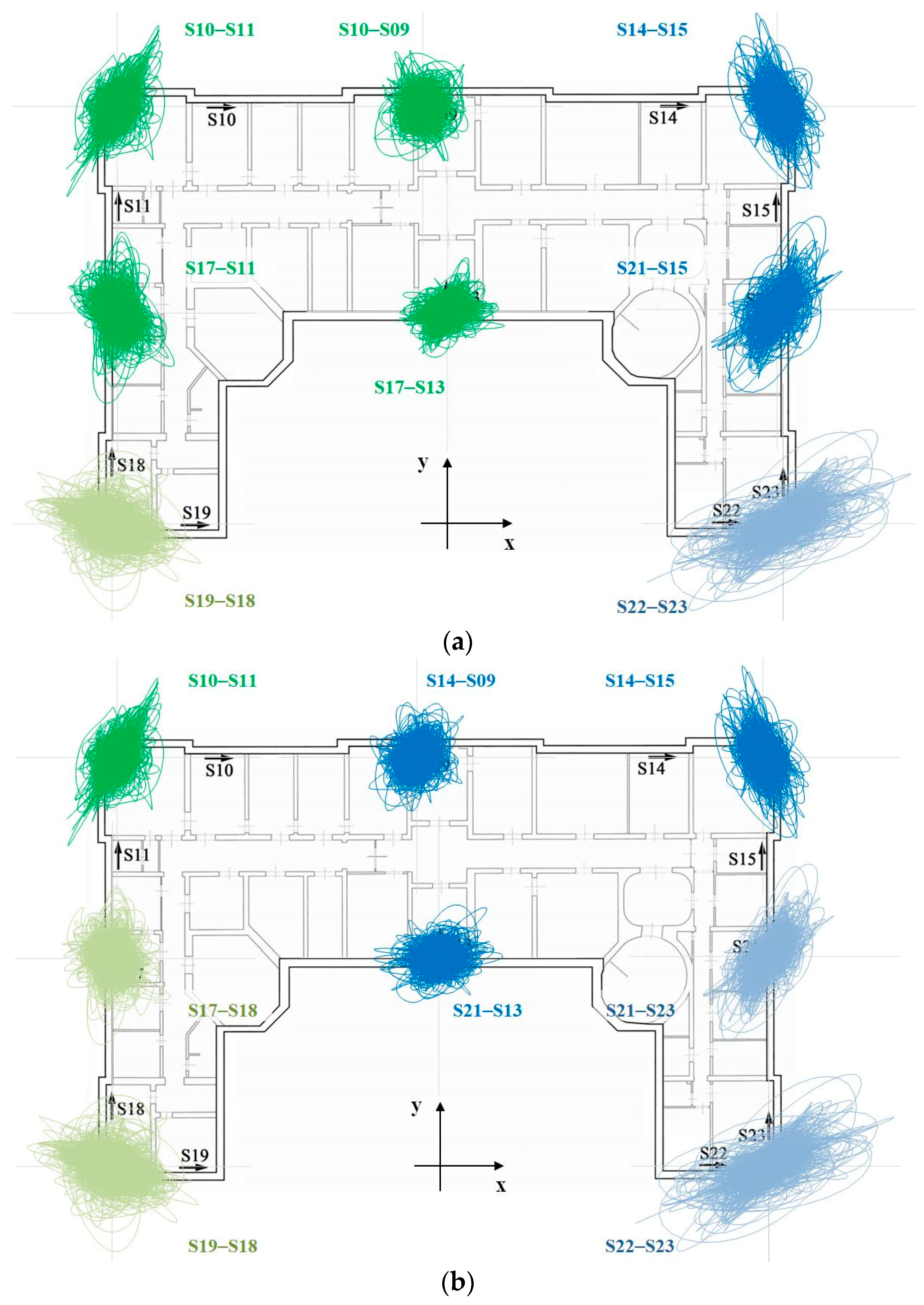


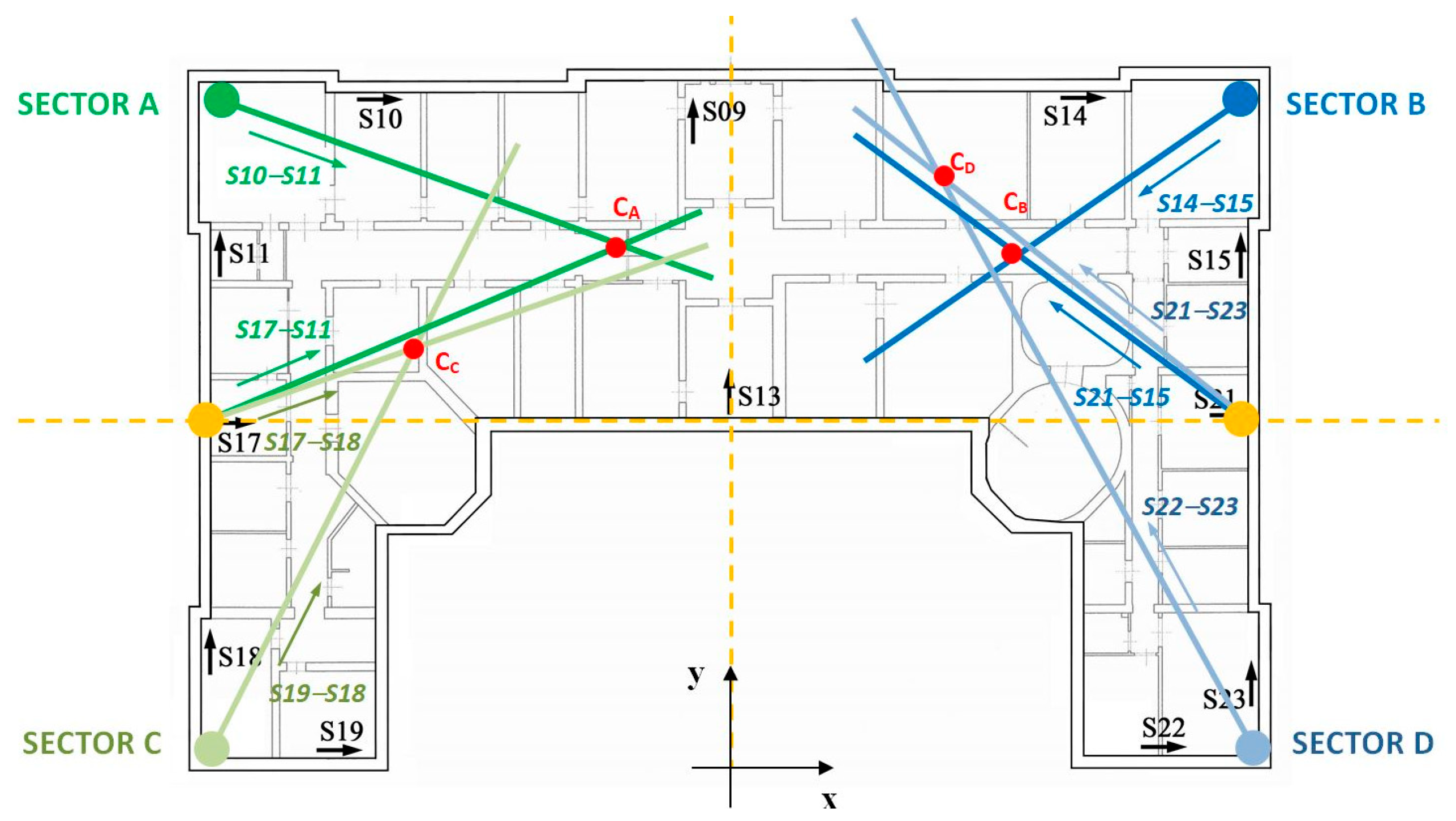



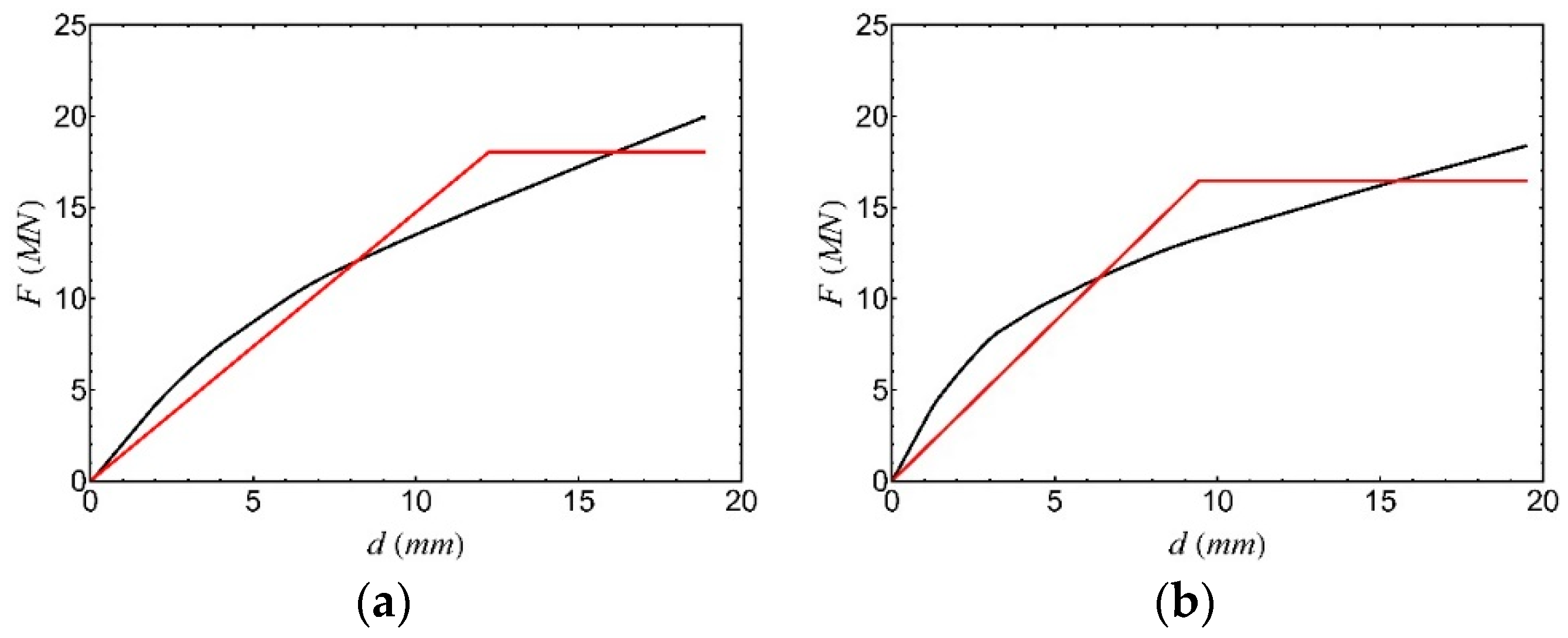
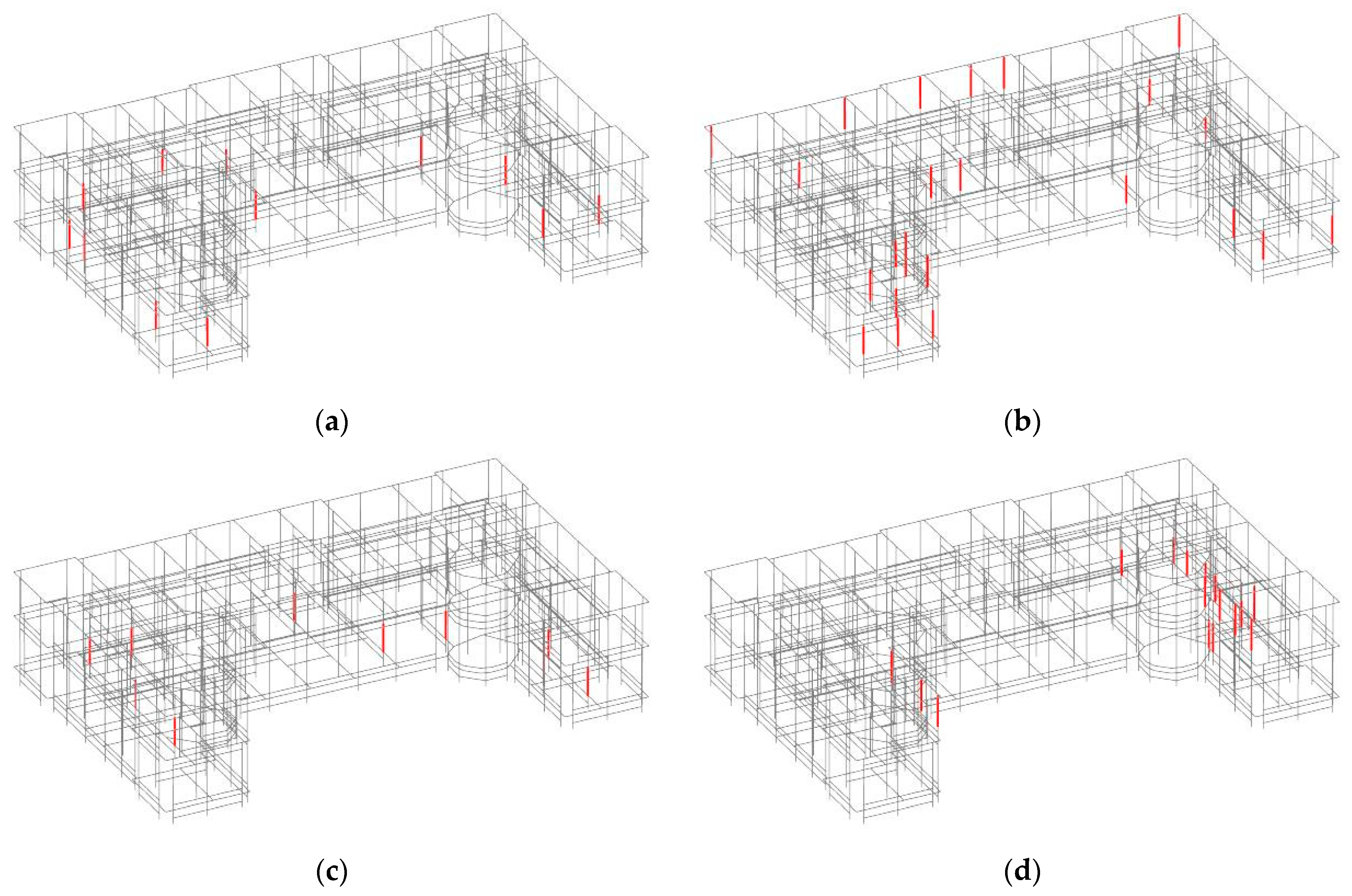
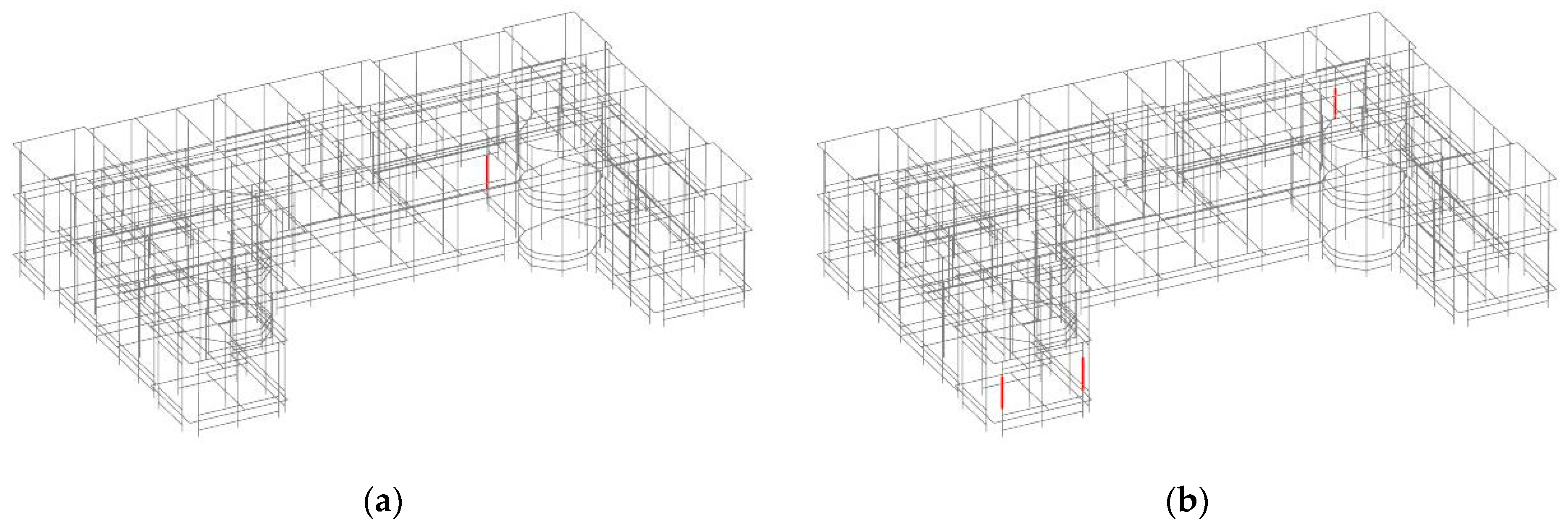
| Mode | Numerical Frequencies (Hz) |
|---|---|
| 1 | 5.22 |
| 2 | 5.41 |
| 3 | 5.60 |
| 4 | 5.83 |
| 5 | 6.37 |
| 6 | 7.70 |
| 7 | 8.60 |
| 8 | 9.15 |
| 9 | 9.73 |
Disclaimer/Publisher’s Note: The statements, opinions and data contained in all publications are solely those of the individual author(s) and contributor(s) and not of MDPI and/or the editor(s). MDPI and/or the editor(s) disclaim responsibility for any injury to people or property resulting from any ideas, methods, instructions or products referred to in the content. |
© 2023 by the authors. Licensee MDPI, Basel, Switzerland. This article is an open access article distributed under the terms and conditions of the Creative Commons Attribution (CC BY) license (https://creativecommons.org/licenses/by/4.0/).
Share and Cite
Tripepi, C.; Saitta, F.; Clemente, P.; Buffarini, G.; Bongiovanni, G. Experimental Vibration Analysis in the Knowledge Process of a Historic Confined Masonry Building. Buildings 2023, 13, 2560. https://doi.org/10.3390/buildings13102560
Tripepi C, Saitta F, Clemente P, Buffarini G, Bongiovanni G. Experimental Vibration Analysis in the Knowledge Process of a Historic Confined Masonry Building. Buildings. 2023; 13(10):2560. https://doi.org/10.3390/buildings13102560
Chicago/Turabian StyleTripepi, Concetta, Fernando Saitta, Paolo Clemente, Giacomo Buffarini, and Giovanni Bongiovanni. 2023. "Experimental Vibration Analysis in the Knowledge Process of a Historic Confined Masonry Building" Buildings 13, no. 10: 2560. https://doi.org/10.3390/buildings13102560
APA StyleTripepi, C., Saitta, F., Clemente, P., Buffarini, G., & Bongiovanni, G. (2023). Experimental Vibration Analysis in the Knowledge Process of a Historic Confined Masonry Building. Buildings, 13(10), 2560. https://doi.org/10.3390/buildings13102560




